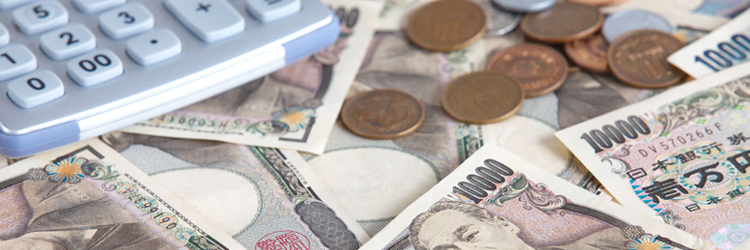Currency

Payment methods in Japan
Japan is basically a cash-based society. But trends have gradually been changing, and there has been a significant increase in the acceptance of other payment methods.
pillen-pharm.comCash
Cash is the most-preferred payment method, especially when it involves small amounts. There is much less likelihood that credit cards are accepted in small restaurants or shops, and cash is usually the only way to pay for small entrance fees at tourist sights, so it is advisable to keep cash, say 20,000 to 30,000 yen, at hand during your stay in Japan.
Credit cards
More and more shops, especially in large cities, accept credit cards nowadays. Many train stations, convenience stores, chain supermarkets and restaurants also accept them. However, as mentioned above, it is better not to rely on credit cards in Japan. Therefore, cash-and-carry is still very much the rule.
Tipping
Tipping is not customary in Japan. Staffs at hotels and restaurants are instructed not to receive any tip but to refuse it politely. However, if you insist on leaving your tip, do so by putting the money in an envelope. Never pull the money out of your pocket and hand it directly, because it may be seen as an insult!
Withdrawing Cash at ATMs
Many automatic teller machines (ATMs) in Japan do not accept foreign-issued cards. Even if they display Visa and MasterCard logos, most accept only Japan-issued versions of these cards. However, the exceptions are ATMs at post offices and 7-Eleven convenience stores across the country; they accept cards that belong to international networks including Visa, Plus, Mastercard, Maestro, Cirrus, American Express and JCB cards and provide an English user menu.
Postal ATM operating hours decrease proportionally to the size of the post office, from major post offices (typically 7:00 to 23:00, shorter hours on weekends) to medium-sized offices (typically 8:00 to 20:00, shorter hours on weekends, possibly closed on Sundays) to minor offices (typically 9:00 and 16:00, closed on weekends). ATMs at 7-Eleven stores are available 24 hours per day year round. Please check with your bank to see whether you have to activate the overseas ATM cash withdrawal function before leaving your country.
Exchanging money
All major currencies and travellers cheques can be exchanged at most banks, post offices, discount ticket shops, some travel agents, some large hotels and most big department stores. Rates vary at places, but note that discount ticket shops often have the best rates. They can be found around major train stations. Also, as in other countries, you will find that US dollars are the easiest currency to exchange, although you should have no problems with other major foreign currencies. In Kyoto, most major banks are located near the Shijo-Karasuma intersection, two spots north of Kyoto Station on the Karasuma subway line.
Sample Prices
| Sample Prices (Average) | |
|---|---|
| Lunch at restaurant low budget | 500 – 800 yen |
| Lunch at restaurant medium budget | 800 – 1,500 yen |
| Lunch at restaurant high budget | above 1,500 yen |
| Milk (regular), (1 liter) | 183.79 yen |
| Loaf of Fresh White Bread (500g) | 173.79 yen |
| Water (1.5 liter bottle) | 144.47 yen |
| Domestic Beer (0.5 liter bottle) | 268.52 yen |
| Imported Beer (0.33 liter bottle) | 312.31 yen |
| Entrance to Kiyomizu-temple | 300 yen |
| Entrance to Ginkaku-temple | 500 yen |
| Kyoto Bus All-day Pass | 500 yen |
| Kyoto Bus and Subway All-day Pass (one day / two days) | 1,200 yen / 2,000 yen |
| Kyoto – Osaka train ticket (JR) | 560 yen |
| Kyoto – Tokyo (JR Shinkansen bullet train) | 13,080 yen |
![Kyoto Culture Experience Program [ Kyo-Clue.com ]](http://kyo-clue.com/apps/wp-content/themes/kyoclue_design/images/common/header_logo.gif)





